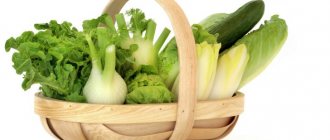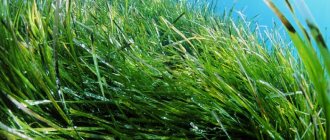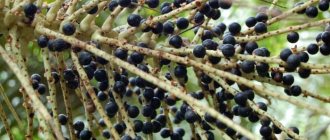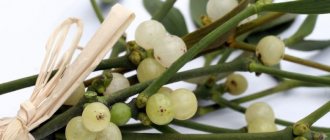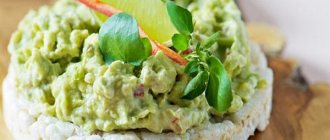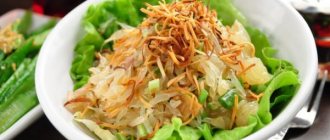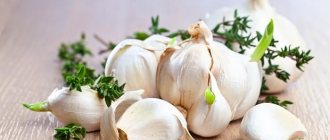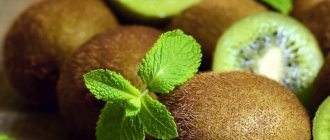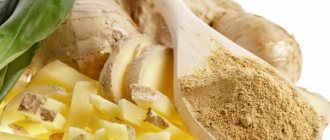What is fucus
Fucus algae belongs to the genus of brown aquatic plants and is found in almost all corners of the planet. It is actively mined in the White Sea by employees of the Arkhangelsk Experimental Plant. The healing properties have been known since 1913, and Fucus preparations using it have been actively used for more than 20 years.
Alternative names for the plant include sea grape, king kelp, and sea oak. This type of algae is easy to distinguish from other “residents” of the underwater kingdom. It is easy to see green bubbles on its leaves, allowing the plant to stay horizontally under water.
The question of where Fucus lives deserves special attention. In addition to the White Sea, which was mentioned above, Fucus can be found in the Pacific and Atlantic oceans (in shallow waters), as well as in the Baltic and Barents seas (in the northern and western parts).
Varieties of algae
Marine plants can consist of just one cell, or they can form entire colonies. They do not have roots and leaves, like terrestrial ones, and are a photosynthetic layer full of vitamins and nutrients.
Algae, which evolved from the first single-celled organisms billions of years ago, gave the planet an atmosphere. It was they who, absorbing solar energy and releasing carbon dioxide, participated in the formation of the Earth's air envelope.
Today, there are 11 species of marine plants, which are united by the presence of one characteristic - chlorophyll. Otherwise, they differ primarily in color and size. So among them you can find brown, green, blue and blue-green representatives. Moreover, it is green algae that scientists call the ancestors of forests and fields.
Some of them can grow on the bottom of the sea, others float freely on the water surface, carried by the wind or current in different directions, and others grow on coastal rocks.
Multicellular marine plants have a thallus, which consists of:
- rhizoid, with which they cling to soil or stone;
- a stem that has a different size for each type of algae;
- a plate that can be cut into fibers and look like a strap or ribbon.
The dimensions of the thallus can vary from a couple of centimeters to several meters in length.
Chemical composition
The beneficial properties of Fucus algae are due to its unique composition, almost identical to human tissue and blood. The structure of the underwater plant contains a full range of important macro- and microelements:
- vitamins B, D, A, K, E and PP;
- folic and pantothenic acids;
- carageenin, fucoidan and fucosterol;
- alginic acid and so on.
There are only 123 kcal per 100 g of product, which allows you to take the plant while losing weight. Other elements include proteins (6.7 g), fats (1.5 g), carbohydrates (2.2 g).
Food fucus is healthier than some products. In particular, 10 g of fucus contains more vitamin D than 10 kg of apricot. Such parallels can be drawn with other elements. For example, 10 g of Fucus contains as much vitamin A as in 100 g of carrots, and iodine as in 11 kg of cod.
What is the secret of fucus? Why is it so popular and useful?
The main unique property of fucus is that its salt composition is as similar as possible to the composition of human tissue fluid. In addition, the chemical composition of the plant contains alginic acid concentrate, fucoidan and iodine.
- Iodine increases performance and endurance, strengthens the nervous system, gets rid of unwanted weight, but most importantly, blocks the negative influence of the environment (including protecting and cleansing the body from radioactive contamination).
- Fucoidan produced a real moral explosion and revolution in the pharmaceutical industry. Scientists have found that fucus, and in particular its powder, has powerful anti-inflammatory and anti-inflammatory properties. But most importantly, it has the ability to destroy low-quality cancer tumors. This means that fucus powder is a promising remedy for fighting cancer.
In addition, fucoidan, which is found in fucus powder, has a positive effect on blood composition, prevents the formation of thrombosis and prevents the development of diabetes by stabilizing blood sugar levels.
- Alginic acid perfectly absorbs water. It contains vitamins A, B, E, C, boron, sulfur, iron and about 25 other useful microelements.
Beneficial features
In modern medicine, Fucus extract has become widespread due to its multifaceted effect on the body. The most important effects include:
- Restoration of the thyroid gland. Due to the high iodine content, the use of the supplement has a positive effect on metabolic processes in the thyroid gland.
- Weight loss. Fucus seaweed is often used for weight loss due to its positive effect on the thyroid gland (mentioned above). The latter is responsible for burning fat and metabolic processes. A positive effect on weight was noted back in 1962. The famous doctor Duchesne Dupar treated a client for psoriasis, but paid attention to weight loss. It is worth considering that taking weight loss supplements alone is not enough.
- Anesthesia. When joint pain occurs or inflammation begins, the use of vesicular fucus is recommended. It can be used both internally and as an external rubbing. Mannitol, bromine, carotene and other elements have beneficial effects.
- Cosmetic sector. The use of Fucus is justified when rejuvenating the body. Algae quickly removes toxins, eliminates dry skin, prevents the appearance of new wrinkles, and helps fight cellulite.
- Cancer treatment. Doctors have noticed that long-term use of Fucus helps reduce the growth and development of blood vessels that feed tumor cells. As a result, the course of the disease slows down.
We also recommend: Edible and inedible chestnuts: how to distinguish
The main properties of algae are listed above. Thanks to them, fucus received the title of “king”. But the above qualities are just the tip of the iceberg. Additional Fucus benefits include:
- normalization of cholesterol levels in the blood;
- protection against blood clots;
- improving the functioning of the immune system;
- antiseptic effect;
- removal of heavy metals and radionuclides;
- normalization of metabolic processes;
- help with atherosclerosis, hypertension and rheumatism;
- colon cleansing;
- normalization of sleep;
- strengthening the walls of blood vessels, etc.
You can’t tell from Fucus’s photo that such an unsightly algae contains such potential. But this does not mean that the product can be used thoughtlessly. Before taking it, it is important to consider not only the positive qualities, but also the negative aspects. Let's look at them below.
Fucus - description and properties
The most famous and widely consumed aquatic “grass” is kelp, which gourmets know as “sea kale”. Fucus algae is the most popular in medicine, homeopathy and cosmetology, due to its rich vitamin composition.
They belong to the family of brown algae and are ribbon-shaped branches on which air bubbles are located in pairs. Usually they form real plantations off the coasts of the Atlantic and Pacific Oceans, as well as off the western shores of the Baltic.
Since they grow in shallow waters, they are collected either by hand or with nets. It is important that the fucus is immediately delivered to dry, otherwise it will lose its medicinal properties.
Fucus algae contains:
- alginic acid (25%) – a polysaccharide with a viscous consistency that lowers blood pressure and is an antioxidant;
- iodine (0.9%);
- lime phosphate is a mineral substance that has a positive effect on the strength of the skeletal system, in the prevention and treatment of cancer;
- sodium bromide;
- iron;
- fucoidan (60%) is a unique polysaccharide that not only cleanses and rejuvenates the body, but also successfully treats cancer;
- vitamins C, E, B.
Considering such a “cocktail” of useful substances, it is not surprising that scientists, following traditional healers, began to use the properties of this algae (you can see a photo of it in the article) for the prevention and treatment of many diseases. Cosmetology companies have not lagged behind them, having determined the properties of the named aquatic plant to rejuvenate the skin.
Contraindications
When consuming Fucus, it is important to use caution and be aware of the potential risks. Benefit and harm are two sides of any healing agent, including the algae in question. For example, excessive intake of iodine into the body can lead to disruptions in the endocrine system. To avoid such problems, it is recommended to consult a doctor before taking the product. He will talk about the features of Fucus algae, beneficial properties and contraindications, and give recommendations on the time and subtleties of use.
Fucus is not recommended for use in the following cases:
- pregnancy and lactation;
- disorders of the thyroid gland;
- disruptions of the hormonal system;
- the need for surgical intervention in the near future;
- individual sensitivity to any of the components;
- age up to 7 years.
The duration of the course should not exceed two weeks. After completing the treatment, it is recommended to take a break for at least one month, and then resume the course.
What are SNPCs and adaptogens?
According to statistics, the population of Russia is divided into three categories: 5% healthy, 75% relatively healthy and 20% sick. However, in the 60s of the last century, professor at the Oncology Research Institute. N.N. Petrova N.V. Lazarev made a discovery that has not yet received due fame and recognition in medicine and cosmetology. N.V. Lazarev discovered the fourth state of the body - the state of nonspecific increased resistance (SNHR). The means by which it is possible to introduce the body into the SNPS are adaptogens. Adaptation is the ability of all living things to self-regulate. The doctrine of SNPCs and adaptogens can largely serve as a theoretical basis for the use of many natural substances that form the basis of preventive medicine (1). Student N.V. Lazareva, professor, doctor of medical sciences K.V. Yaremenko continues to develop the doctrine of SNPS. The main properties of adaptogens, taking into account the additions of K.V. Yaremenko:
- naturalness and harmlessness;
- antioxidant properties;
- stimulation of regenerative processes;
- the impact on a functionally changed background, regardless of the direction of the shifts and the more active the deeper the changes (up to certain limits);
- increasing the body's resistance to various damaging influences (i.e., the ability to introduce the body into the SNPS);
- increased performance (without doping effect);
- optimization of the functions of the main body systems;
- prevention of diseases and increase in active life expectancy (1).
N.V. Lazarev and his students proved that in SNPS the body is largely protected from physical and chemical damage and from the main causes of mortality - cardiovascular, cancer and viral diseases. The state of adaptation is based on genetically programmed processes, among which the leading place is occupied by nonspecific protective reactions that maintain homeostasis and increase the body's resistance to adverse effects, forming a state of cross-adaptation and resistance to hypoxia, hyperthermia, physical stress, infections and other negative factors. It has been proven that the protective effects of adaptogens are especially pronounced when administered prophylactically. Adaptogens lead to certain changes in the body that prepare the appropriate background for performing a particular job or protecting against aggression. These changes seem to be extremely important for the preparation of body systems and can be considered as peculiar signs of SNHL. Taking into account the low quality of food, everyday stressful situations, and unfavorable environmental conditions, the role of adaptogens in today's world is increasing many times over.
Application
Dried sea fucus is actively used in many areas. Let's highlight the main ones:
- Medicine. The drug is prescribed when a patient has many health problems. The algae is effective for diseases of the genitourinary, nervous, respiratory and cardiovascular systems. It also helps patients with allergies, skin diseases, joint inflammation and muscle pain. Indications for use include vitamin deficiency, prevention of oncology, thrombosis and other problems.
- Homeopathy. The benefits of Fucus in homeopathy are highlighted. Most often, the product is used to regulate the functioning of the thyroid gland, helps in solving problems with lymph nodes and skin diseases. Courses are prescribed for obesity and cancer.
- Cosmetology. Fucus is also used in cosmetology. It is used in the manufacture of nourishing creams, cleansing masks and anti-wrinkle products. Dry seaweed is also used in SPA treatments to improve blood circulation, remove toxins and excessive amounts of subcutaneous sebum. Fucus is used to make massage gel crabs, massage oils and much more.
- Cooking. The features of fucus are also useful in cooking, where the algae is added to various dishes and thereby nourishes them with useful elements - polyunsaturated acids, vitamins, amino acids, etc. The product is added to salads, main courses and soups to add flavor.
- In other areas. Fucus is also used in industry. It is added to animal feed meal, used as fertilizer and used in the manufacture of potassium salts and iodine.
We also recommend: How cashews grow
The scope of use of algae is very wide, due to its taste and rich composition of useful components.
Recipes with the addition of fucus
Fucus can be used as a seasoning for various dishes and salads.
There are many recipes using it. Here are some of them:
Tea
To prepare it, you need to take ¾ cup of dry fucus and pour boiling water over it. Leave overnight, then strain.
To improve the taste, you can add lemon, mint, ginger, and a little honey.
Refueling
To prepare it you will need:
- 1.5 – 2 tbsp. l. dry fucus;
- 0.5 tsp. salt;
- 1 tsp. any seasoning you like. You can add seasoning for Korean carrots;
- Grate a small onion;
- Pass a small head of garlic through a garlic squeezer.
Place all ingredients in a cup. Add 2 tbsp. l. apple cider vinegar, 1 glass of water. Mix thoroughly and leave for half an hour.
If all the water has been absorbed, you can add more, but make sure there is no excess. After an hour, add enough sunflower oil so that it is 0.5 centimeters higher than the mixture. Mix again.
To provide the body with all the necessary vitamins, it is enough to consume this mixture 2 tablespoons per day.
Rice noodles with fucus and vegetables
This dish is quite simple to prepare. It is not only tasty, but also healthy. And, besides this, it will help diversify your daily menu.
A minimum of heat treatment makes it easily digestible for the body.
To prepare it you need to take:
- 200 g dry rice noodles;
- 200 g zucchini;
- 1 carrot;
- 1 tbsp. l. fucus powder;
- 1 medium sized onion;
- 2 cloves of garlic;
- 3 tbsp. l. soy sauce;
- 3 tbsp. l. lemon juice;
- 2 tbsp. l. Sahara;
- Salt and pepper - to taste;
- For frying - vegetable oil.
Fill the noodles with water at room temperature and leave for 30 minutes. After which we drain the water and place the noodles in a colander.
Add 2 - 3 tablespoons of water to the fucus and leave to soften. Cut carrots, zucchini, and onion into cubes.
Heat the oil and fry the onion and garlic. Then add the remaining vegetables and fry them for 5 minutes. Add noodles to the vegetables and fry for another two minutes.
Now let's prepare the sauce. To do this, mix soy sauce with lemon juice and sugar, pepper and stir until the sugar dissolves.
That's it, the dish is ready. Place the noodles with vegetables on small plates and add the prepared sauce. You can eat with chopsticks or a fork.
Bon appetit!
How to use
Before taking Fucus seaweed, you should read the instructions and consult your doctor. In most cases, it is enough to eat one teaspoon before meals and wash it down with still mineral water. If you don’t like the taste of the product, you can add the powder to food. In this way, the beneficial product enters the body without an unpleasant aftertaste. The advantage is that the seaweed has a salty taste, which allows you to reduce the amount of salt.
Another way to use Fucus is to use it as a snack in a situation where it is not possible to eat on time during the day. To prepare the tincture, you need to mix one spoon of powder with 200 ml of boiling water, and then leave the composition for 12 hours. In the future, the finished mixture should be consumed throughout the day.
Literature
- Yaremenko K.V. Optimal state of the body and adaptogens / St. Petersburg, a guide for doctors. – Publishing house “ELBI”, St. Petersburg. – 2007. –130 p.
- Study and use of therapeutic and prophylactic drugs based on natural biologically active substances / St. Petersburg: ed. V.G. Bespalova, V.B. Nekrasova. - Aesculapius. – 2000. – 470 p.
- Bespalov V.G., Nekrasova V.B., Vershinin A.S., Shevchenko I.A. and others. Algiclam is a bioactive complex from kelp. Application in clinical practice / St. Petersburg: a manual for doctors. – Nordmedizdat. – 2008. – 51 p.
- Bespalov V.G., Nekrasova V.B., Skalny A.V. Yod-Elam is a kelp product. Application in the fight against iodine deficiency diseases / St. Petersburg: a manual for doctors. – Nordmedizdat. – 2010. – 92 p.
- Nekrasova V.B., Vinogradova T.I., Lozovskaya M.E., Osidak L.V. The use of phytoadaptogens for the prevention and complex treatment of tuberculosis / St. Petersburg. Nordmedizdat. – 2008. – 72 p.
- RF Patent No. 2205019 dated May 27, 2003. The drug “Mamoklam” for the treatment of mastopathy / Bespalov V.G., Nekrasova V.B., Nikitina T.V. – Application No. 2002118185 dated 07/09/2002
- RF Patent No. 2233669 dated 08/10/2004. Method for treating mastopathy - Application No. 2003100546 dated January 14, 2003
- RF Patent No. 2034560 dated 10.05.95. Cancer prevention product "Klamin". Bespalov V.G., Nekrasova V.B., Nikitina T.V. and others – Application No. 93-019880 dated 05/18/1995. – B.I. No. 13, 1995
- RF Patent No. 2085208 dated July 27, 2097. Radiation protection agent for the body. Ponomareva T.V., Nekrasova V.B., Ivanov E.V. and others – Application No. 94039798 dated 03.11.1994. – B.I. No. 21, 1997
- 10. A.s. No. 1782603 according to application No. 4891096/14 dated November 16, 1990. – B.I. No. 47, 1992
- RF patent. Method for obtaining copper derivatives of chlorophyll. – Application No. 505267 dated June 29, 1992. – B.I. No. 13, 1995
- RF patent No. 2573310. A method for extracting plant materials, a method for producing a chlorophyll-containing bioactive product, including such extraction and the product. – Application No. 2014123894 dated 06/10/2014
- R. ge Magistris, Y. Cavallo, M. Montella, W. Memmolo // Minerva med. – 1990. – Vol. 81. H. 371–383
- Osidak L.V., Erman E.S., Afanasyeva O.I. and others. Fitolon. Use for health improvement and as a therapeutic and prophylactic agent / St. Petersburg: a manual for doctors. – Nordmedizdat. – 2008. – 36 p.
- A.s. No. 1780744 dated 02/14/1991. Bath product / application no. ???? from 02/14/1991 from 08/15/22, B.I. No. 46 from 08/15/22
- RF patent No. 1811400. Method for the prevention of oral diseases / application No. 4931635 dated 03/05/1991. – B.I. No. 15, 1993. – 10.10.92
- RF patent No. 2134522. Biologically active food supplement from kelp. – Application No. 98103076 dated 02/25/1998. B.I. No. 23 dated 08/20/1999
- RF patent No. 2152737. Biologically active food supplement made from brown algae. – Application No. 98123517 dated December 25, 1998, B.I. No.????? from 07/20/2000
- Podkorytova A.V., Aminina N.M., Levachev M.M., Miroshnichenko V.A. Functional properties of alginates and their use in therapeutic and preventive nutrition / Nutrition issues. – 1998. – No. 3. pp. 26–29
- Bespalov V.G. Calcium alginate is a source of soluble dietary fiber and calcium / M.: Fito-Line. – 2010. – 26 p.
- Nekrasova V.B., Iordanishvili A.K., Drozhzhina V.A. and others. Application of biocorrectors of nutrition in dentistry and maxillofacial surgery / St. Petersburg: Nordmedizdat. – 2012. – 56 p.
Comparison with other algae - Laminaria, Spirulina, Chlorella
When purchasing a product, many people ask which algae to choose: Fucus or Laminaria - which is better. If we analyze the needs of residents of the Russian Federation, the second algae is in great demand. The reason is that it is more convenient to recycle and is available for purchase. The necessary raw materials are easy to buy in China.
Also recommended: Chai Latte
But there is also a minus here. There are environmental problems in China, so the composition may contain toxins and heavy metals. Against this background, Fucus is more attractive, which grows in the ecologically clean waters of the White Sea and is safe. Both algae contain fucoidan, but Fucus contains four times more. The advantage is that Fucus’s composition is as close as possible to the characteristics of the human body, therefore it is better absorbed by the body.
For comparison, other algae can be cited:
- Chlorella. The plant contains 5-10 times more chlorophyll. This product quickly removes toxins from the body and cleanses it. Another feature is the presence of 50-60 percent protein and all eight amino acids. There is 10 times more carotene here than in apricots. Lots of zinc and iron.
- Spirulina. Another supplier of protein, which is more abundant than meat. Algae is used to make food for astronauts. In addition to protein, it contains healthy fats, vitamins and microelements. Like Fucus, Spirulina is well absorbed. Sold in tablet and powder form.
As can be seen from the above, Fucus has a number of features that set it apart from its competitors. The main advantages are a rich spectrum of action, the presence of iodine and acids important for the body.
Where does kelp grow, what is it useful for?
Sea kale or kelp is the most popular seaweed in Russia, Eastern countries, and all over the world. Its family includes more than 30 species, each of which is useful and widely known for its healing and rejuvenating properties.
- In Russia, kelp grows in huge quantities in the Far East. In particular, the Sea of Okhotsk is considered one of the richest seaweed plantations in the world.
- In Eastern countries, for example, in China, Japan, Korea, a unique algae is grown specially. Its healing properties have been known for a long time. During the time of Emperor Kann-Si, who reigned in the Mukden province, an order was issued according to which all residents were obliged to eat at least 5 pounds of dried underwater plant during the year. This was done on the advice of doctors. So they tried to fight goiter, which at that time suffered from the population of the province.
Chemical composition, properties
Laminaria has a unique balanced composition, containing the most important vitamins, minerals, and trace elements for the body. Among them, the most important are:
- iodine, sodium, iron, potassium;
- calcium, phosphorus, magnesium, sulfur;
- vitamins C, E, group B, especially B 12, B1, B2;
- fructose, polysaccharides, amino acids;
- dietary plant fibers.
Sea kale is especially rich in iodine, which, due to its natural nature, is quickly and easily absorbed by the body. This is an excellent supplement for the prevention and treatment of thyroid problems. A product that improves digestion, metabolic processes, and strengthens the immune system.
- It is recommended to use cabbage for weight loss and chronic constipation. This is because it improves intestinal motility and actively removes waste products.
- Research by scientists has proven that the plant helps cleanse the blood, improves the condition of blood vessels, and is useful for bleeding of various etiologies.
- Laminaria is considered an effective natural remedy for the prevention and treatment of various neoplasms. It not only stops the growth of tumors, but also, due to its rich composition, activates the body’s hidden reserves.
How to choose and where to buy
Before purchasing, it is important to carefully select the product. Consider the following factors:
- Reviews about Fucus. First, read what other people write about this product. Pay special attention to the opinions of doctors.
- Place of production. Try to take a product that is manufactured in Russia, provided that the algae is obtained in the White Sea. The Chinese version may do more harm than good.
- Please note the release date. The average shelf life is no more than 24 months.
It’s easy to buy a product online – just type the appropriate question and study the offers. At the same time, it is better to buy Fucus in trusted stores that are ready to provide a quality certificate.
Forms and dosage
Fucus vesiculosum is available in many forms.
You can buy it in dried, powder or capsule form online or in some health food stores. It is also available in tea form.
Due to limited research, there are no standard dosage recommendations for Fucus vesiculosum. However, most Fucus vesiculosum supplements have doses of 500 mg.
To make bladderwrack tea, steep one tea bag for 4-5 minutes in 240ml hot water. Alternatively, add 1 teaspoon (5 ml) dried Fucus vesiculosum to boiling water and let it steep for 10-15 minutes.
Until more safety research becomes available, it is best to limit consumption to no more than 2 cups (500 ml) per day. This will help you avoid consuming too much iodine and other active compounds found in fucus.
Conclusion:
Bladderwort can be purchased dried, powdered, as a dietary supplement, or in tea form. More research is needed before a recommended dosage can be made.

